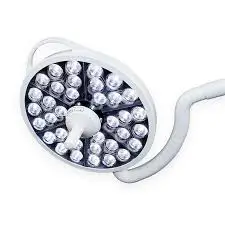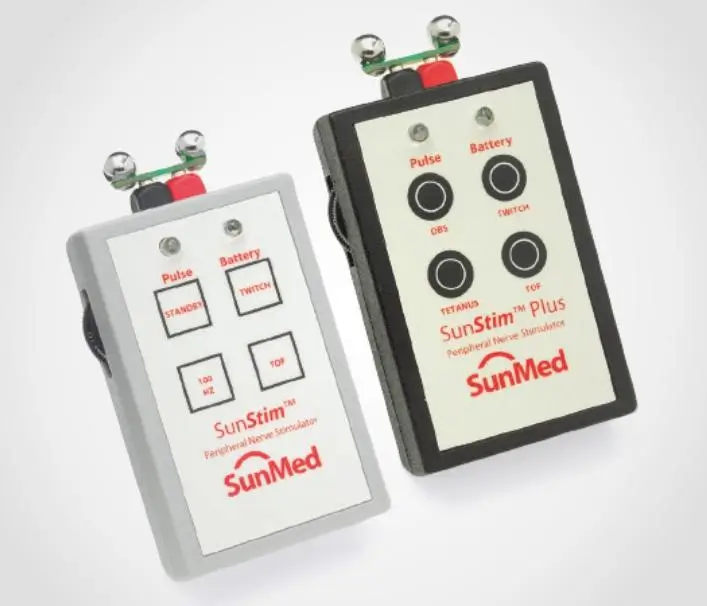The Paheal Your Health & Wellness Partner
At Paheal, we believe knowledge is the first step toward better health. Dive into our comprehensive library of health conditions, from common ailments to rare diseases. Whether you're looking for symptoms, causes, or treatment options, our expert-reviewed articles provide reliable, easy-to-understand information. Stay informed, stay healthy.
The Best Healthcare At Home
The Paheal Healthcare Guide
Your health deserves accurate, trustworthy information. Paheal partners with medical professionals, nutritionists, and wellness experts to bring you evidence-based advice. From managing chronic conditions to improving your lifestyle, our articles are designed to empower you with the knowledge to make informed decisions.
Feel Better. Know Better. Live Better
Take Charge of Your Health with Paheal
Living with a health condition can feel overwhelming. At Paheal, we break down complex medical information into clear, actionable steps. Our personalized tracking tools and expert-reviewed treatment guides help you manage symptoms, communicate with doctors, and regain control - because you deserve to live fully, regardless of diagnosis
Explore Paheal Blog
At Paheal, we believe knowledge is the foundation of good health. Our blog is a curated hub of expert-backed articles, trending health insights, and practical wellness tips.
AI in Healthcare: 5 Breakthroughs That Could Change Your Medical Care
-
Posted by
 Dr. Ayaan Kapoor
Dr. Ayaan Kapoor
- 0 comments
Plant-Based Diets for Beginners: How to Transition Without Nutrient Gaps
-
Posted by
 Dr. Ayaan Kapoor
Dr. Ayaan Kapoor
- 0 comments
7 Healthy Foods That Are Secretly Hurting Your Gut – Paheal Nutritionists Reveal
-
Posted by
 Dr. Ayaan Kapoor
Dr. Ayaan Kapoor
- 0 comments
The Gut-Brain Connection: How Your Diet Affects Your Mood
-
Posted by
 Prof. Rajan Iyer
Prof. Rajan Iyer
- 0 comments
Anxiety or Just Stress? Paheal’s Quick Mental Health Checklist
-
Posted by
 Prof. Rajan Iyer
Prof. Rajan Iyer
- 0 comments
We Have Our Patients Diseases Diagnostic Laboratory
At Paheal, we bridge the gap between medical technology and patient understanding. Our diagnostic equipment resources help you:

Why To Choose Paheal
Paheal empowers you with trusted health knowledge and quality medical products, all in one place.With personalized guides, interactive tools, and a supportive community, we make health decisions simpler and smarter.
The Paheal Guide to Holistic Health and Wellness: Nurturing Body, Mind, and Spirit
In today's fast-paced world, health has evolved beyond the mere absence of disease. True wellness encompasses a delicate balance between physical, mental, emotional, and spiritual well-being. At Paheal, we believe in empowering individuals with knowledge and tools to achieve optimal health through a holistic approach.
This comprehensive guide explores the multifaceted nature of health and wellness, providing evidence-based strategies to enhance your quality of life. Whether you're just beginning your wellness journey or seeking to deepen your understanding, this resource offers valuable insights for everyone.
What is Paheal?
Paheal is a dedicated health and wellness platform that serves as a reliable source for up-to-date information across the entire spectrum of wellbeing. Our name, derived from "path to healing," reflects our commitment to guiding readers toward healthier, more balanced lives.
At Paheal, we believe that good health is not simply the absence of disease, but a state of complete physical, mental, and social wellbeing. Our content is created with this holistic perspective in mind, addressing health concerns from multiple angles and providing actionable strategies for improvement.
Our team consists of health professionals, certified nutritionists, mental health experts, and experienced medical writers who work together to ensure all content is accurate, relevant, and helpful for our diverse audience.
What is Rule34 Paheal?
Rule34 Paheal represents our specialized section dedicated to addressing taboo or sensitive health topics that are often overlooked in mainstream health discussions. The name draws on the internet concept that "if something exists, there is information about it" – applying this principle to ensure that even uncomfortable or rarely discussed health concerns receive proper, medically accurate attention.
This section provides factual, judgment-free information about sexual health, rare conditions, stigmatized illnesses, and other topics that people might hesitate to discuss with healthcare providers. By bringing these subjects into the open with professional, respectful coverage, we help reduce shame and encourage proper healthcare seeking behaviors for all health concerns, regardless of societal taboos.
Our Rule34 Paheal content maintains the same high standards of medical accuracy and sensitivity as all our other sections, while acknowledging that comprehensive health education must include topics that might make some uncomfortable but are essential for complete wellbeing.
The Pillars of Holistic Health
Holistic health stands on several interconnected pillars, each contributing to your overall well-being:
- Physical Health: Caring for your body through nutrition, exercise, sleep, and preventive care
- Mental Health: Nurturing cognitive function and emotional well-being
- Social Health: Building and maintaining meaningful relationships
- Spiritual Health: Connecting with your inner self and finding purpose
- Environmental Health: Creating harmony with your surroundings
Each pillar requires attention and care, as imbalance in one area inevitably affects the others. Let's explore each dimension in detail.
Nutrition: Fueling Your Body for Optimal Performance
The Fundamentals of Balanced Nutrition
Nutrition forms the foundation of physical health. What we consume directly impacts our energy levels, immune function, cognitive performance, and long-term health outcomes. A balanced diet should include:
- Macronutrients: Proteins, carbohydrates, and healthy fats in appropriate proportions
- Micronutrients: Essential vitamins and minerals from diverse food sources
- Phytonutrients: Plant compounds with antioxidant and anti-inflammatory properties
- Hydration: Adequate water intake to support all bodily functions
The Power of Whole Foods
Whole foods—those that remain close to their natural state—provide superior nutritional value compared to highly processed alternatives. Consider these principles when planning your meals:
- Emphasize plant diversity (fruits, vegetables, legumes, nuts, seeds)
- Choose whole grains over refined options
- Select high-quality protein sources
- Include healthy fats from sources like avocados, olive oil, and fatty fish
- Minimize ultra-processed foods, added sugars, and artificial ingredients
Personalized Nutrition Approaches
No single diet works for everyone. Factors such as age, activity level, genetics, health status, and personal preferences all influence nutritional needs. Common dietary approaches include:
Dietary Approach | Key Principles | Potential Benefits | Considerations |
Mediterranean Diet | Emphasizes fruits, vegetables, whole grains, olive oil, fish; moderate consumption of dairy, poultry, eggs; limited red meat | Heart health, longevity, cognitive function, reduced inflammation | Requires cooking skills; some fresh ingredients can be costly |
Plant-Based/Vegan | Excludes animal products; focuses on fruits, vegetables, legumes, whole grains, nuts, seeds | Environmental sustainability, reduced risk of certain chronic diseases | Requires B12 supplementation; needs careful planning for complete protein |
Low-Carbohydrate | Reduces carbohydrate intake; emphasizes proteins and fats | May benefit blood sugar control, weight management | Requires monitoring of fiber intake; may be challenging to sustain |
Intermittent Fasting | Alternates eating windows with fasting periods | Potential benefits for cellular repair, insulin sensitivity | Not suitable for everyone; should be approached with caution |
Mindful Eating Practices
Beyond what we eat, how we eat matters significantly. Mindful eating involves:
- Paying full attention to the eating experience
- Recognizing hunger and fullness cues
- Appreciating food's sensory qualities
- Eating slowly and without distractions
- Understanding emotional triggers for eating
Incorporating these practices helps foster a healthier relationship with food and prevents common issues like overeating or emotional eating.
Physical Activity: Moving for Health and Happiness
The Science Behind Exercise Benefits
Regular physical activity offers remarkable benefits across all dimensions of health:
- Physical benefits: Improved cardiovascular health, stronger muscles and bones, better weight management, enhanced immune function
- Mental benefits: Reduced anxiety and depression, improved mood, better cognitive function, stress reduction
- Longevity benefits: Lower risk of chronic diseases, extended lifespan, improved quality of life in later years
Creating a Balanced Exercise Routine
A comprehensive exercise program should include:
- Cardiovascular exercise: Activities that elevate heart rate (walking, running, cycling, swimming)
- Strength training: Resistance exercises to build and maintain muscle mass
- Flexibility work: Stretching to maintain range of motion
- Balance training: Exercises that improve stability and prevent falls
- Functional fitness: Movements that support daily activities
Finding Your Movement Joy
Sustainability is key to long-term exercise adherence. Consider these strategies:
- Explore various activities until you find those you genuinely enjoy
- Set realistic goals that focus on consistency rather than perfection
- Track progress to maintain motivation
- Incorporate movement into daily routines (taking stairs, walking meetings)
- Consider group activities for social connection and accountability
Exercise Recommendations by Age Group
Age Group | Recommended Activity Types | Weekly Targets | Special Considerations |
Children & Adolescents (6-17) | Playful activities, sports, strength-building exercises | 60+ minutes daily of moderate-to-vigorous activity | Focus on fun, skill development, and variety |
Adults (18-64) | Cardio, strength training, flexibility work | 150-300 minutes moderate or 75-150 minutes vigorous cardio; strength training 2+ days | Balance different exercise types; adjust intensity based on fitness level |
Older Adults (65+) | Walking, swimming, strength training, balance exercises | Same as adults, plus balance work 3+ days | Emphasize fall prevention; modify exercises as needed; gradual progression |
Sleep: The Foundation of Recovery and Restoration
Understanding Sleep Architecture
Quality sleep involves cycling through several stages:
- NREM Stage 1: Light sleep, transition between wakefulness and sleep
- NREM Stage 2: Body temperature drops, heart rate slows
- NREM Stage 3: Deep sleep, critical for physical restoration
- REM Sleep: Dream state, essential for cognitive function and emotional processing
A full night's sleep consists of multiple cycles through these stages, each serving crucial biological functions.
The Health Impacts of Sleep
Sleep quality and quantity directly affect:
- Cognitive function: Memory consolidation, learning, creativity, decision-making
- Emotional regulation: Mood stability, stress management, emotional resilience
- Physical recovery: Tissue repair, immune function, hormone regulation
- Metabolic health: Glucose metabolism, appetite regulation, weight management
- Cardiovascular health: Blood pressure regulation, heart health
Creating Optimal Sleep Conditions
Establish a sleep-supportive environment through:
- Consistent schedule: Going to bed and waking at similar times daily
- Comfortable environment: Cool, dark, quiet bedroom with a supportive mattress
- Pre-sleep routine: Calming activities that signal the body to prepare for rest
- Technology boundaries: Limiting blue light exposure before bedtime
- Mindful consumption: Avoiding caffeine, alcohol, and heavy meals close to bedtime
Addressing Common Sleep Challenges
For persistent sleep issues, consider these evidence-based approaches:
- Sleep restriction therapy: Temporarily limiting time in bed to build sleep pressure
- Cognitive behavioral therapy for insomnia (CBT-I): Addressing thoughts and behaviors that interfere with sleep
- Relaxation techniques: Progressive muscle relaxation, deep breathing, meditation
- Professional evaluation: Consulting healthcare providers about potential sleep disorders
Stress Management: Building Resilience in a Busy World
Understanding the Stress Response
Stress triggers a cascade of physiological changes:
- Alarm stage: Release of adrenaline and cortisol, preparing the body for action
- Resistance stage: Continued adaptation to stressor
- Exhaustion stage: Occurs with chronic stress, depleting physical and mental resources
While acute stress can be adaptive, chronic stress contributes to numerous health problems including cardiovascular disease, immune dysfunction, digestive issues, and mental health concerns.
Effective Stress Management Strategies
Build stress resilience through multiple approaches:
Mindfulness and Meditation
- Regular practice reduces reactivity to stressors
- Enhances awareness of stress triggers
- Improves emotional regulation
- Can be practiced in various forms (seated meditation, mindful walking, body scans)
Physical Activity
- Reduces stress hormones
- Releases endorphins ("feel-good" hormones)
- Provides psychological distance from stressors
- Improves sleep quality
Social Connection
- Buffers against stress effects
- Provides emotional support
- Offers perspective and potential solutions
- Fulfills basic psychological needs
Cognitive Reframing
- Challenging catastrophic thinking
- Developing realistic perspectives
- Focusing on aspects within personal control
- Finding meaning in difficult experiences
Time Management
- Setting realistic priorities
- Breaking large tasks into manageable steps
- Building in recovery periods
- Establishing boundaries
Creating a Personalized Stress Management Plan
Effective stress management varies between individuals. Consider:
- Identifying your specific stress triggers and patterns
- Exploring various techniques to find what works best for you
- Building daily stress-reduction practices into your routine
- Recognizing when professional support might be beneficial
Mental Wellness: Nurturing Psychological Health
The Continuum of Mental Health
Mental health exists on a spectrum rather than as a binary state of "well" or "unwell." Understanding this continuum helps normalize the fluctuations we all experience and encourages proactive care.
Mental wellness involves:
- Emotional awareness and regulation
- Cognitive flexibility
- Positive self-concept
- Ability to cope with life's challenges
- Capacity for meaningful relationships
- Sense of purpose and meaning
Building Psychological Strength
Enhance mental wellness through intentional practices:
Self-Awareness
- Regular reflection on thoughts, emotions, and behaviors
- Journaling to track patterns and triggers
- Mindfulness practice to enhance present-moment awareness
- Seeking feedback from trusted others
Emotional Intelligence
- Recognizing and naming emotions
- Understanding emotional triggers
- Developing healthy expression strategies
- Practicing empathy toward self and others
Cognitive Resilience
- Challenging negative thought patterns
- Developing realistic optimism
- Practicing gratitude and appreciation
- Cultivating curiosity and lifelong learning
Purpose and Meaning
- Clarifying personal values
- Setting meaningful goals aligned with values
- Contributing to something larger than oneself
- Finding meaning even in difficult circumstances
When to Seek Support
Professional mental health support can be valuable for everyone, not just during crisis. Consider reaching out when:
- Emotional distress interferes with daily functioning
- Coping mechanisms become unhealthy or ineffective
- Significant life transitions create adjustment challenges
- Preventing potential issues through proactive care
- Desiring personal growth and enhanced well-being
Social Health: The Power of Connection
The Biology of Belonging
Humans are fundamentally social beings, with connection needs wired into our biology. Research consistently shows that strong social relationships correlate with:
- Lower mortality rates
- Reduced risk of cardiovascular disease
- Strengthened immune function
- Better mental health outcomes
- Enhanced cognitive longevity
- Greater life satisfaction
Building Meaningful Relationships
Quality relationships require intentional cultivation:
- Active listening: Being fully present without planning responses
- Vulnerability: Sharing authentic thoughts and feelings
- Consistent presence: Showing up reliably in good times and bad
- Boundaries: Respecting limits and communicating needs clearly
- Conflict resolution: Addressing differences with respect and openness
Navigating Different Relationship Types
Different relationships serve various needs in our lives:
Relationship Type | Function | Cultivation Strategies |
Family | Foundation, shared history, potential for unconditional support | Open communication, establishing adult boundaries, creating new traditions |
Friendships | Chosen connections, common interests, diverse perspectives | Regular contact, shared experiences, supporting through life transitions |
Romantic Partnerships | Intimacy, commitment, shared life building | Quality time, emotional transparency, ongoing curiosity |
Community Connections | Belonging, collective purpose, expanded resources | Participation in shared activities, volunteering, neighborhood engagement |
Digital Connection: Benefits and Boundaries
Technology offers unprecedented connection opportunities while presenting unique challenges:
- Benefits: Maintaining distant relationships, finding like-minded communities, accessibility for those with limitations
- Challenges: Potential for shallow interaction, comparison triggers, attention fragmentation
- Balanced approach: Using technology intentionally to enhance rather than replace in-person connection
Preventive Healthcare: The Power of Proactive Measures
Understanding Preventive Care
Preventive care focuses on maintaining health and catching potential issues early. Categories include:
- Primary prevention: Preventing disease before it occurs (vaccinations, lifestyle measures)
- Secondary prevention: Early detection through screening
- Tertiary prevention: Managing existing conditions to prevent complications
Essential Screening Guidelines
Regular health screenings catch problems at their most treatable stages:
General Screenings
- Annual physical examinations
- Blood pressure checks (at least every 2 years)
- Cholesterol screening (every 4-6 years for average risk)
- Diabetes screening (every 3 years for average risk)
Age and Gender-Specific Screenings
- Mammograms (recommendations vary by risk profile)
- Pap smears and HPV testing
- Prostate cancer screening (discuss with healthcare provider)
- Colorectal cancer screening (starting at age 45-50)
- Bone density testing (women 65+, earlier with risk factors)
Skin and Dental Health
- Annual skin checks for suspicious moles
- Dental examinations every 6 months
- Professional cleanings to prevent gum disease
Building a Partnership with Healthcare Providers
Maximize healthcare relationships through:
- Preparing questions before appointments
- Being honest about symptoms and concerns
- Following through on recommendations
- Seeking clarification when needed
- Advocating for your needs respectfully
Integrating Health Technologies
Smart Monitoring Tools
Modern health technology offers unprecedented insights:
- Wearable fitness trackers: Monitor activity, sleep patterns, heart rate
- Smart scales: Track weight, body composition, trends over time
- Continuous glucose monitors: Observe blood sugar responses to foods and activities
- Blood pressure monitors: Regular home monitoring for cardiovascular health
- Sleep tracking devices: Analyze sleep quality and patterns
Health Apps and Digital Platforms
Digital tools support various wellness goals:
Category | Functions | Selection Considerations |
Nutrition Apps | Food logging, nutrient analysis, meal planning | Evidence-based information, usability, customization options |
Fitness Apps | Workout guidance, progress tracking, community support | Exercise variety, proper form instruction, appropriate progression |
Meditation Apps | Guided sessions, mindfulness reminders, sleep support | Teacher qualifications, session variety, personalization |
Health Records | Medical history organization, appointment tracking | Security features, healthcare integration, user interface |
Evaluating Health Information Online
Navigate the abundance of health information by:
- Checking source credentials and expertise
- Looking for evidence-based claims with proper citations
- Verifying information across multiple reputable sources
- Being wary of miraculous claims or single-study conclusions
- Consulting healthcare providers about significant findings
Creating Sustainable Health Habits
The Science of Habit Formation
Understanding how habits form helps create lasting change:
- Cue: Trigger that initiates the behavior
- Craving: Motivation or desire for change
- Response: The actual habit or behavior
- Reward: The benefit received from the behavior
This framework can be applied to establish positive health routines.
Strategies for Lasting Change
Research-backed approaches to habit development include:
Environment Design
- Making healthy choices convenient
- Creating visual cues for desired behaviors
- Removing triggers for unwanted habits
- Restructuring spaces to support goals
Habit Stacking
- Attaching new habits to existing routines
- Creating natural transition points
- Building consistency through association
- Starting with small, manageable additions
Accountability Systems
- Tracking progress visually
- Sharing goals with supportive others
- Working with coaches or accountability partners
- Creating appropriate rewards for milestones
Overcoming Setbacks
- Expecting and planning for obstacles
- Implementing if-then contingency plans
- Practicing self-compassion after missteps
- Focusing on progress rather than perfection
Sample Habit Implementation Plan
For establishing a regular exercise routine:
- Specific goal: 30-minute walks, three times weekly
- Cue: Placing walking shoes by the door
- Time anchor: After morning coffee
- Accountability: Walking date with a neighbor
- Tracking: Calendar check-offs
- Reward: Favorite podcast only during walks
- Obstacle plan: Indoor backup activity for bad weather
Special Health Considerations for Different Life Stages
Children and Adolescents
Supporting healthy development through:
- Nutrient-dense foods for growth and development
- Regular physical activity through play and sports
- Consistent sleep routines
- Limited screen time
- Social skills development
- Age-appropriate autonomy
Young Adults
Establishing health foundations during:
- Education and career building
- Relationship exploration
- Identity development
- Financial independence
- Stress management skills
- Preventive health habits
Middle Adults
Balancing multiple responsibilities while addressing:
- Changing metabolism
- Career demands
- Family obligations
- Caring for aging parents
- Preventive screenings
- Stress management
Older Adults
Embracing healthy aging through:
- Maintaining muscle mass and bone density
- Cognitive stimulation
- Social engagement
- Adaptation to changing capabilities
- Medication management
- Legacy building
Environmental Health: Your Surroundings Matter
Creating Healthy Living Spaces
Your immediate environment significantly impacts wellness:
Air Quality
- Using air purifiers when needed
- Incorporating air-filtering plants
- Minimizing use of harsh chemicals
- Ensuring proper ventilation
Non-Toxic Materials
- Choosing safer cleaning products
- Selecting low-VOC paints and furnishings
- Filtering water appropriately
- Using natural personal care products
Ergonomics
- Setting up workspaces to prevent strain
- Using supportive furniture
- Taking regular movement breaks
- Positioning screens at appropriate heights
Nature Connection
- Bringing natural elements indoors
- Creating outdoor living spaces
- Accessing green spaces regularly
- Growing plants or gardens when possible
Environmental Sustainability and Health
Personal and planetary health are interconnected:
- Choosing locally grown foods reduces environmental impact while providing fresher nutrition
- Active transportation (walking, cycling) benefits both personal health and reduces emissions
- Reducing plastic use protects ecosystems and minimizes exposure to endocrine-disrupting chemicals
- Conserving water and energy creates healthier communities and reduces pollution
The Future of Health and Wellness
Emerging Health Trends
Stay informed about evolving approaches:
Personalized Health
- Genetic testing for tailored recommendations
- Microbiome analysis for digestive optimization
- Wearable data integration for personalized insights
- AI-assisted health coaching
Preventive Focus
- Shift from disease treatment to prevention
- Emphasis on lifestyle medicine
- Recognition of social determinants of health
- Integration of traditional wisdom with modern science
Community-Based Wellness
- Neighborhood design for active living
- Social prescribing (referrals to community resources)
- Group-based health initiatives
- Shared responsibility for collective well-being
Navigating Health Information Overload
With abundant information available, develop skills to:
- Identify credible sources and expert consensus
- Recognize marketing versus evidence-based claims
- Apply critical thinking to health trends
- Focus on fundamental principles rather than passing fads
- Implement changes gradually and sustainably
Conclusion: Your Personal Health Journey
Health is not a destination but a continuous journey. The path to wellness is highly individual, influenced by genetics, life circumstances, personal values, and available resources. Rather than aiming for perfection, focus on consistent progress in directions meaningful to you.
Remember these guiding principles:
- Balance over restriction: Sustainable approaches beat extreme measures
- Process over outcomes: Focus on daily choices rather than distant goals
- Curiosity over judgment: Approach health with openness rather than criticism
- Integration over compartmentalization: See health dimensions as interconnected
- Self-compassion over self-criticism: Treat yourself with the kindness you would offer others
At Paheal, we're committed to supporting your wellness journey through evidence-based information, quality health products, and a community of like-minded individuals dedicated to holistic health. Together, we can create lives of greater vitality, resilience, and joy.
Resources for Continued Learning
Recommended Reading
- "How Not to Die" by Michael Greger, MD
- "Why We Sleep" by Matthew Walker, PhD
- "The Body Keeps the Score" by Bessel van der Kolk, MD
- "Atomic Habits" by James Clear
- "The Blue Zones" by Dan Buettner
Quality Online Resources
- National Institutes of Health (NIH.gov)
- World Health Organization (WHO.int)
- Harvard Health Publishing (health.harvard.edu)
- Centers for Disease Control and Prevention (CDC.gov)
- American Academy of Nutrition and Dietetics (eatright.org)
Health Tracking Tools
- Food and activity journals
- Sleep logs
- Mood tracking applications
- Habit formation assistants
- Environmental exposure monitors
Remember that your health journey is personal and ongoing. By continuing to learn, adapt, and implement evidence-based strategies that work for your unique circumstances, you can create a foundation for lasting wellness across all dimensions of health.
Our Purpose: Health Empowerment for All
Paheal exists to make health knowledge accessible and action simple. We combine expert-reviewed content with curated medical products—so you can decode your health, find the right tools, and make informed choices. Because better decisions start with better understanding.
Will be used in accordance with our Privacy Policy
Know About Our Team
A MIT Media Lab alumnus, Prof. Iyer leads Bangalore’s NeuroInnovate Center, developing affordable EEG headsets for depression detection. For Paheal, he validates neurological content and tests diagnostic gadgets like at-home cognitive screens.
This Stanford-educated nurse practitioner revolutionized pelvic health education through her viral Cycle Wise webinar series. At Paheal, she demystifies topics like PCOS and perimenopause while curating feminine care products.
A board-certified internist with 14 years of experience, Dr. Kapoor bridges ancient wisdom and modern science. At Paheal, he oversees content on integrative therapies, ensuring evidence-based yet culturally sensitive guidance.










